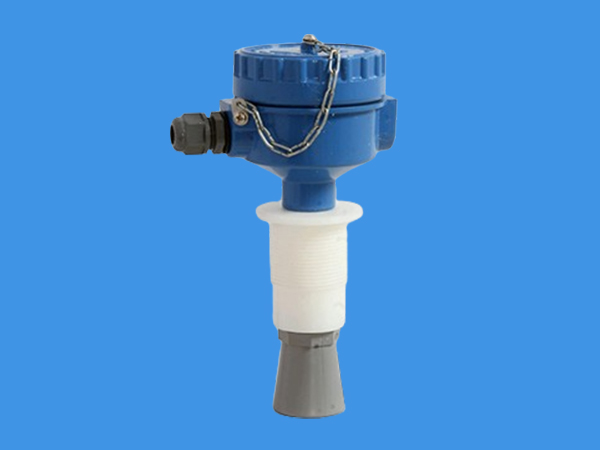Home » Ultrasonic Level Transmitter
Ultrasonic Level Transmitter
Ultrasonic Level Transmitter
Principle:
Ultrasonic Level Transmitter works on the principle of calculation of time interval between emission and receipt of High Frequency sound wave. A high frequency sound wave emitted from a transmitter mounted inside a transducer hits the liquid surface, the time taken by the sound wave to return to receiver mounted inside the transducer will be proportional to liquid level”
Highlights :
- Our entry level cost effective product
- Fast setup, configuration and commissioning
- Maximum range of 10mts (33fts)
- 4-20mA output and optional LCD display
- False echo tracing
- Direct installation on tanks, vessels and reactors
- Independent hand held programming unit for fast configuration of multiple units
- Perfect for diesel oil tank measurements
- Extended range of 0.25 to 15 meter (0.8ft to 49ft)
- Integral LCD display, keypad and integral 4-20 mA output
- Automatic compensation for different environment
- Approved for installations in hazardous areas (Ex)
- Simple to install and configure
- Direct installation on tanks, vessels and reactors

Description
| Technical Data | |
|---|---|
| Electronics Housing | Stainless Steel or die cast aluminium, flame proof |
| Temperature | 0 to 65 deg C |
| Applications | Liquids including hazardous but non-corrosive medium |
| Input Supply | 24V DC |
| Analog output (Programmable) | 4 – 20mA 20 – 4 mA 0 – 10 V DC 10 – 0 V DC |
| Mode | Distance OR height measurement |
| “ Display ” | 8 x 2 alphanumeric displya, “ 7 segment LED ” |
| Communcation | RS 485 – Modbus |
| Measuring range | 5mtr, 10mtr 0.5mtr, 1 mtr, 3.5 mtr |
| Resolution | 1mm, 5mm or 10mm depending on models |
| Accuracy | 0.5% of FSD |
| Updation time | 150 mS max |
| Minimum distance | 40mm to 300mm depending on range |
| Display Filter | None / Low / Medium / High |
| Temperature compensation | Inbuilt |
| Voltage Variations | Internal calibration and automatic compensation |
| Process connections | ½” BSP, 1 ½” BSP |
| Electrical connections | PG 9 one gland, 2 numbers |
| Sensor face | Anodised aluminium |
| Sensor body | PVC |
